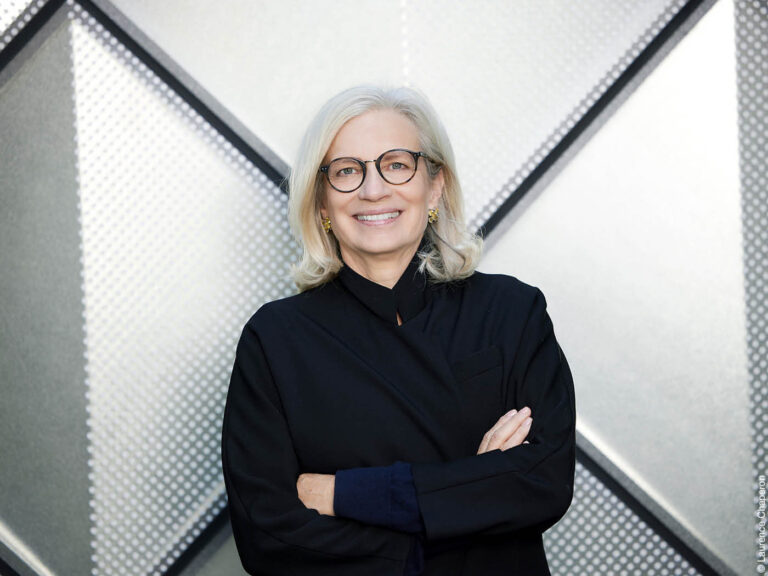Timo Bleeker is a registered Architect, Project Management Professional, Green Star Associate and Passive House Designer.
Based in Perth for the last 11 years after relocating from Germany where he practised previously, Timo has worked as a Design and Project Architect as well as a Contract Manager on small to mid-scale construction projects.

He focused on the end-to-end delivery of building design projects, ranging from new developments to alterations and refurbishments in the commercial, educational and residential sector. In September 2019, he became a Director of Idealings Architecture and started his further pursue for Passive House based solutions. For our NAXNAX Netzwerk Architekturexport report he provides us with some insights of the work life he experienced in his chosen home country Australia.
NAX: Dear Timo, how do you experience working and the planning process in Australia?
Timo Bleeker: I still remember when I started working here in Perth in 2009 that in general the working processes and building regulations are not fundamentally different. You will find that balustrade heights and ramp gradient requirements etc are generally the same or similar. Planning stages are comparable, however, a regulated “Honorarordnung” doesn’t exist. Architect fees are rather determined by the market. Australian regulations are not as descriptive, the Construction Code and Australian Standards are in comparison more brought in nature than the “VOB”, for example.
The first two practices I worked for had about 15-20 employees and had an open-office type environment. One of the first things I noticed was the friendly and close-knit atmosphere between workers and between the directors and workers. Conversations were always starting with the first name. The director never got addressed as Mr Smith but rather as “Sorry John, would you have a minute to look at this please.” Even in multi-disciplinary project teams it is the same, almost to a degree where at the end of the project the last names are not even remembered. This takes the distance away between hierarchies and made management a lot more approachable for a country-newbie like me.
Australia is known for its good work-life balance and that is not just a myth. The companies’ management is often concerned about their employer’s wellbeing. “There is a life beside work. Go home, enjoy the evening and return fresh to work tomorrow morning” is a sentence that is regularly heard all around the places.

Passivhaus-Projekt in Perth: Scarborough HouseJody D’Arcy, Ben Caine, Leanhaus, Perth
NAX: How does working and planning in Australia differ from planning and building in Germany, also in regard to passive houses?
Timo Bleeker: The first thing I found different is that project teams in Australia are often bigger than in Germany. There are more consultants with specialized knowledge involved which would have been covered under the umbrella of a few professionals in Germany. For example, cost estimation or time planning is usually undertaken only at a high-level schematic stage by the architect (or not even that) and then outsourced to a specialized consultant for details.
The second thing that is different is the built methodology and assembly. Designing, documenting and constructing an energy efficient building is not yet widely known by professionals. Topics like “thermal bridging” or “airtightness” are rarely addressed. Double glazing is not standard. Ventilation and cooling get usually achieved by active, energy intensive air conditioning systems. Central heating generally does not exist and is rather covered by the air conditioning unit. Designing and constructing sustainable buildings is a new market opportunity with a raising demand. In the last 2-3 years the Passivhaus topic got more and more recognized as an energy efficiency solution and adopted into projects.
Thirdly, architects are less involved on the building site and have less trades contact. Usually building contracts are between the client and a main contractor who then sub-contracts to the trades. Architects only administer the contract on the client’s behalf and usually visit site on a fortnightly basis. This applies to both, residential and commercial projects. I personally always liked the close contact to trades and be close to the actual outcome of the design. The way how contracts are setup in Australia rather prevent this a bit.

Passivhaus-Projekt in Perth: Cottesloe HouseRoger Joyner, Passivhaus Perth
NAX: How can a German architect adapt to the intercultural challenges and the economic differences and regulations in Australia (procedures, orders and standards)?
Timo Bleeker: Australia welcomes foreign business partners and its government tries to avoid lengthy application processes. In general, I found that most councils are well advanced and embrace the IT world for automatization and fast-tracking of authority processes. Councils are very approachable and responsive via all communication channels. They usually understand the importance of making processes easy and avoiding hurdles. They see this as part of being attractive for investments within their council’s jurisdiction.
NAX: In your experience, what are the biggest hurdles?
Timo Bleeker: Architectural practices who like to enter the Australian market, best do this partnering with a local office. They are familiar with the local environment, the authorities and have the experience and further contacts where required. Even on government tenders there often is a percentage of the selection criteria being “local supply”.
Individuals who like to work in Australia need a valid visa. One way of doing this is applying for a so called “Sponsorship” visa where the company you are working for takes legal guardianship for you in terms of working rights. However, the profession you are in needs to be listed as high demand in Australia, otherwise the visa application might not be granted by the government.
Another way of entering the country is through a “Work and Holiday” visa when you are under 30 years of age. As you can imagine, this visa is rather focussed on the younger generation and comes with a few restrictions: It is only valid for one year and it allows you to work maximum 6 month for one employer. It could nevertheless be a step in the door to do a 6-month probation period and then move to a Sponsorship visa once the company knows your skills and personality. This is exactly what happened in my case.
Innovations in the construction market, especially to do with energy efficiency, is popular with the young generation who want to build or renovate. There is however the unknown, the local aspect (“that’s not how we do things here”) and the entrenched habits that prevent using “foreign” construction principles to build houses a more sustainable way than most of the current stock in Australia. People seem to like to stay with the known until the neighbour has been building a “better” house which then triggers rethinking.

Passivhaus-Projekt in Perth: North Beach HouseISmart Building Group, Perth
NAX: How has the situation changed for architects and planners since the Corona pandemic?
Timo Bleeker: When the Corona pandemic hit the world in March this year, for about 3-4 month the uncertainty in the construction industry was noticeable and projects were widely put on hold or time schedules stretched. Since July/August, when the restrictions eased, business came quickly back to somewhat normal and remained there. Additionally, the government issued a subsidy initiative for small building projects and renovations to support local trades and planners. Its effect is widely noticeable and stimulates mostly residential construction.
In terms of the working environment, Australian companies were often open to working-from-home arrangements as a perk within employment contracts (where possible) to suit their worker’s family conditions, even before the pandemic. With the pandemic this fact got intensified and many architects have been working and are often still working part-time from home.
NAX: What are the market opportunities?
Timo Bleeker: Innovations in the construction market, especially to do with energy efficiency, is popular with the young generation who want to build or renovate. Many are well aware of the climate change and like to tribute somehow to more sustainability. They often don’t know how exactly but they like to live sustainably. One option to cover this demand is constructing or renovate their house to the Passive House standard. For the moment these design principles are mostly unknown, even when they have been in existence for over 30 years. Saying this, many of the immigrants from Europe or America know these principles or at least know there are low energy construction principles that allow improved comfort living compared to the conventional housing stock widely found in Australia. This is where the market opportunity for architects and Passive House designers starts. It’s a growing market and with more and more sustainable buildings getting build, more awareness is been created for more demand. This is a snowball effect, and we are at the very start right now.
Having spoken about innovations earlier in this article, there is a growing market for technology transfer. In Europe known construction methodologies (such as the Passive House standard) and construction products (such as double glazing or heat recovery ventilation units) are getting more and more demanded on the Australian market for 2-3 years by now. These are still early days, but because Australia has a fairly forgiving climate in most parts of its country, applying the Passive House principles to achieve a well-insulated house becomes cost effective in comparison to colder countries. This is an opportunity for any sustainable design focussed architects and trained Passive House designers, as well as product suppliers for the next years to come.
NAX: Thank you, Timo, for taking the time to answer our questions.
If you have any questions about working and living in Australia feel free to contact Timo Bleeker, who is a contact architect in our network:
Timo Bleeker Dipl.-Ing. Architect
PMP GSA Passive House Designer
IDEALINGSARCHITECTURE
E timo.bleeker@idealings.com.au
M +61(0)438 917 126
W www.idealings.com.au





